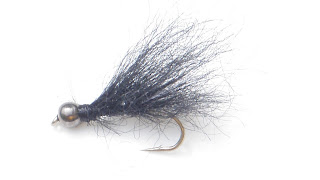
I first started fishing with my dad and grandfather. This was back in the late 50's early 60's.
The only fishing that held my grandfather's interested was using cane poles to fish for bullheads after dark. It was always an adventure to get slathered up with bug dope (I still can smell the 6-12 brand repellant) getting ready to venture out in the dark armed only with a flashlight.
My dad was always an avid catch and fillet fisherman. He grew up during the depression and his family pretty much survived on the fish they caught. My dad's only interest was catching panfish (bluegills and perch (he used to also fish for crappie but lost interest in them for some reason)). My dad's weapon of choice was also a cane pole, although he did sometimes use an ancient spinning rod to fish vertically "off the bottom".
For some reason, I always knew I'd like fly fishing. Since neither my dad or grandfather knew the first thing about it, I was on my own. I started at about age nine or ten. My gear consisted of a branch off of a weeping willow, about 5 or 6 feet of 8 lb mono (the only fishing line my dad used), and a fly made out of a piece of kitchen sponge and a rubber band.
I spent countless hours fishing a small, shallow channel for "mud bass" (in retrospect I think they were some green sunfish hybrid). It was simple, but held the attention of even a 10 year old for at least two or three years.
In a surprise move by my parents, they bought me a real fly rod and reel when I was twelve years old. I'm pretty sure it was about a 7 or 8 weight, I never did know (it still had the old letter designation which I never understood). I do know I used a 5 weight line on it. Casting was always an adventure, but that's what I used for the next several years as a teenager.
Once out of college, my interest in fly fishing grew and I know I've invested multiple thousands of dollars on some very nice fly fishing equipment. Much of the quality stuff has turned out to be a fairly decent/good investment. I've spent several tens of thousands of hours using the equipment, and have caught (and mostly released) tens of thousands of fish.
About ten years ago, after having fished extensively, I developed a system where I only used one fly pattern for about 85% of my time spent trout fishing. I did vary size and color, but it was nice to have confidence in a simple generic fly that I knew would catch fish in a wide variety of situations. Part of the system was I realized that fishing a relatively short line was a very effective way to have precise control of the fly which was a very effective way to catch fish.
Two seasons ago, I saw my first reference to something called Tenkara. It must have been in a fishing forum someplace. I started to do a few google searches, and as soon as I started reading about it, I knew I was going to enjoy doing it. The references I found talked about using simple patterns on a fixed line, which was very akin to the way I was already fishing.
What also attracted me was the reference to the use of furled lines, since I was already actively furling (and selling) leaders. If that weren't enough, the history of Tenkara supposed derived from the Japanese Samurai warriors who used Tenkara as a training method for swordsmanship. My wife and I have both practiced martial arts for the past 15 years, including karate and Iaidio. Iaido is the art of drawing and cutting with the Japanese sword.
Again I started out with less than optimal equipment, a $12 fiberglass crappie pole bought at Walmart. It actually didn't cast all that bad, and it caught fish. I found myself once again, back in time, a close equivalent to fishing for "mud bass" with a willow branch. It's kept me fascinated for the past two seasons, the more I fish with it, the more I like it.





